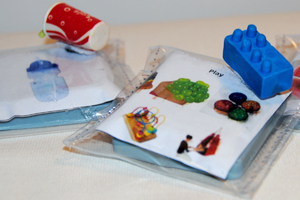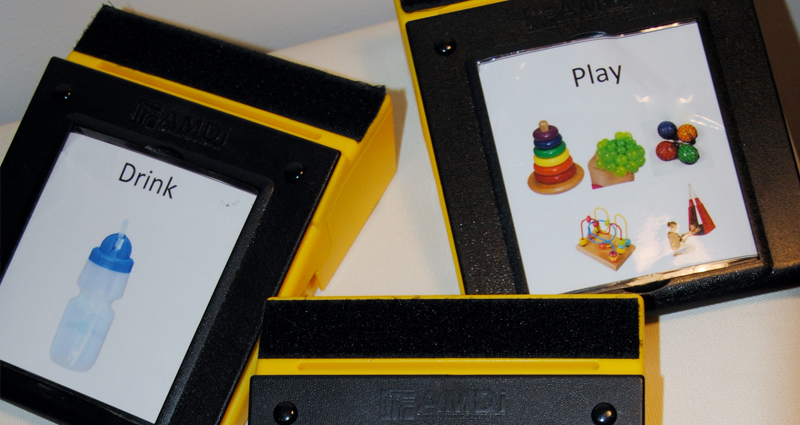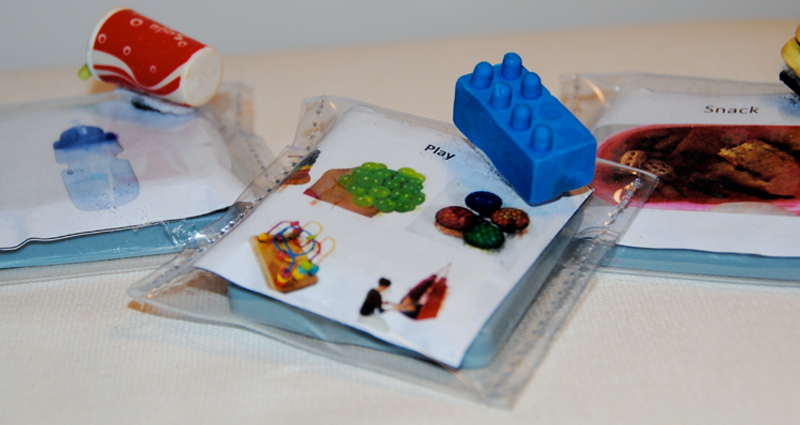Switches in some ways can be a great introduction into AAC, they are easy to use, highly visible and can be quick to implement into the daily routine. They are great for children with motor difficulties as they can be used with an open hand touch. I have also found that switches are a great tool when working on children gaining attention – simply program the switch to an attention gaining word/message “I want to talk” and leave it in an easily accessible location so that your child simply has to tap it to gain your attention.
In saying this there are limitations to switches, the main being the restriction on phrases and language. Switches are programmed for a message, so in order to have multiple voice output messages you either need multiple switches (which causes portability issues) or continuously change the voice message (which is time consuming).
AMDi Partner/Plus Switches
All in all I have found switches work well when used for a specific purpose;
- Toilet: having a switch mounted near the bathroom door so that your child can press it to request help with toileting“toilet” “I need to go to the toilet”
- Attention: as mentioned before having a switch that is in a central location or an easily accessible location (on the coffee table, attached to wheelchair) that your child can press to gain you attention “hey mum!” “I want to play” “hey!”
- Help: having a switch to request help, in particular if you are working on difficult tasks.
Pairing switches with a 3D object to assist word association



